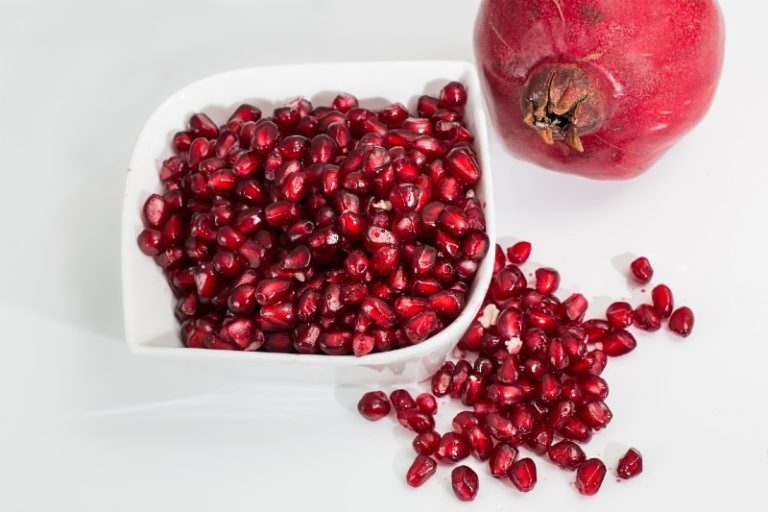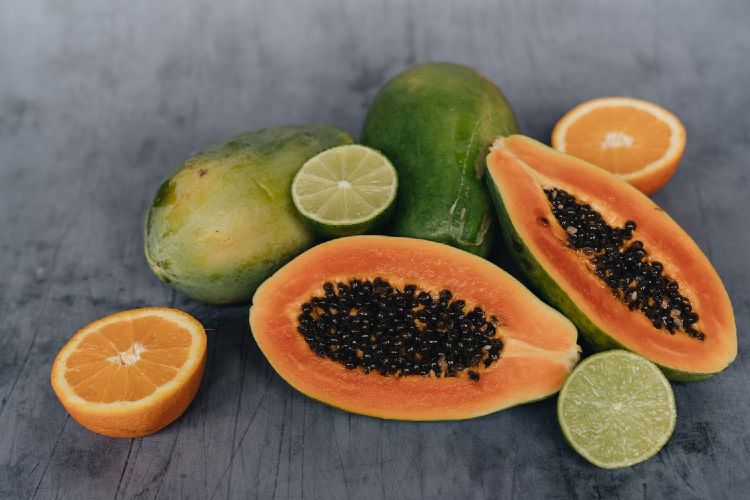Cherry Amour
There are very few sixteen year olds who ask for a cherry tree for Christmas. I am, however, one of those strange few.
My mother is a professional caterer and I started becoming interested in food after beating a minor eating disorder. I had gone through the fussy childhood stage of eating only chicken dinosaurs, chips and ice cream, to eating only the bare minimum. But through all that my love of cherries stayed with me.
We try to eat seasonally in my family. We never buy summer fruit out of season and every June, July and August I look forward to my favourite soft fruit stocking supermarkets shelves: peaches, apricots, greengages and cherries. I can gorge myself on cherries – when you get a batch that are perfectly ripe, so the skin is dark, almost purple in colour, and the inside flesh is sweet, the blood red juice stains your lips and runs down your chin, It is my idea of food heaven. My parents are just as passionate about cherries as I am and in July and August our pudding choices regularly feature this stone fruit – cherry and almond tart being our favourite.
My mother recently heard an interview on BBC Radio 4 with Michael Dallaway from Dallaway’s Cherries from East Sussex. His latest business venture allowed people to rent their trees, while he and his team looked after them, ensuring their pollination, covering them with netting and ensuring they were properly watered. Michael invites customers to come to see their rented trees in April when the blossom is in flower. He hosts a hog roast and you can walk through the rows of pink blossoming trees. Michael sends out emails again in the early summer, giving people a slot of about two weeks to pick the fruit from their specific tree.
The first year we rented our Kordia cherry tree it cost us £40 and we picked 28kg of fruit. The cost of renting has increased slightly every year, but the quantity and the quality of the crop stayed constant. This year, however, due to the frosts we had in April, which provided poor pollinating conditions, the crop was significantly less impressive than the previous three years. This is unfortunately the risk that we took in this venture, and it has been the only year in four that has been a disappointment.
My mother and I went to pick our tree on the 17th July. We could see the problems the farm had had this year just from the car park – they had laid straw down over the churned up ground, and careful manoeuvring of the car was required so we didn’t get stuck in the mud.
Expecting someone much older, I was very surprised to have a young, tanned man greet me, dressed in a t-shirt and a pair of worn jeans. Michael told me the story of his venture.
“I inherited the farm from my father in 2000 and at the time this orchard was full of apple trees, which were at the end of their commercial life. In 2003 we replaced those apple trees with these cherry ones. Each tree has a life span of twenty to twenty-five years, so we’ve only had to replace about twenty so far that have died for various reasons. The Rent a Cherry Tree idea was just a light bulb moment for me. You have a lot of time to think when you are out here picking and caring for the trees and that’s when the idea came to me. I thought it would be worthwhile, because they are a difficult crop to grow and I thought there might be a market of people out there who wanted lots of cherries, but didn’t want to look after the trees themselves. Originally I thought there would only be about three or four hundred people who would want to rent them, but then we were in Country Living magazine, as well as on Radio 4 and Country File, so the numbers rocketed. We currently have 1,500 trees rented out to people here, and there’s a waiting list.
“I think that we might have a drop in rental renewals this year, because of the bad crop, especially from people who have started renting this year. Most trees have produced only 2kg of cherries, which is a ten to fifteen per cent crop.
“We’ve had a few people this year who have been angry about the lack of cherries, but usually when someone’s tree has underperformed we give them the cherries from a spare one, so they get a full crop. Unfortunately there aren’t the trees to spare this year.”
Michael’s farm stretches for twenty-two acres, plus an extra twelve that he rents. On that farm he only produces cherries, which consist of twenty-five to thirty different varieties that crop at different times of the year. He has also set aside two acres for asparagus, which this year has failed to crop due to the waterlogged field.
When the time comes to start preparing the trees, Michael calls in self-employed farm labourers to help him.
“I usually have twenty-five to thirty pickers help me harvest the crop, but this year I only had ten or twelve because of the wet and cold.”
We were then led to our tree, walking down the rows of netted trees that were done to keep the pesky birds from stealing our investment. The flat rural Kent landscape, with rows of high criss-crossing hedges and fields dotted with trees, spread around us on every side. My tree is in row two, and is next door to a row of Regina trees. Because the latter variety crops later, and therefore flowers later, there were more cherries on these compared to the Kordia trees, as there had been more insects around at the time to pollinate them.
As I walked down our row, I could see the damage done by the poor weather . My tree, normally drooping under the weight of cherries, was like all the others, mouldy and split. In the end, after throwing away several fluffy grey cherries, we took home just 2.3kg of fruit, compared to the usual 30kg. As my mother pointed out, they were the most expensive cherries we had ever bought.
Back home we made made my favourite cherry pie – an open pastry case, which you line with whole cherries and then fill with frangipane. There is nothing like it in the world (for taste and calories) and as soon as the cherry season comes in, this is the dish that I truly look forward to devouring. We had to sort through the rest of the cherries, cutting away the mouldy splits before we cooked them. Thankfully my mother had some cherries stored from last year in the freezer.
Usually we make glacécherries, which we then use to make cherry and almond cake, or add to my father’s favourite fruit cake. My mother also makes what I think is the best cherry jam in existence, using the cherries we pick in Kent and also the ones we find growing wild around my home county of Buckinghamshire. The jam bursts with flavour and is a deep indigo in colour. We purchased some cherry juice before leaving the farm, which we enjoyed diluted with cream soda when we got home – it takes 3kg of pressed cherries to make one 1litre bottle.
This year will not dishearten me. Just like all fruit growing, the weather and luck plays an important role. We will certainly be back next year.
Further details
Cooks Yard Farm
New Road
Northiam
East Sussex
TN31 6HS
Email: [email protected]
Tel: 07905 671114



